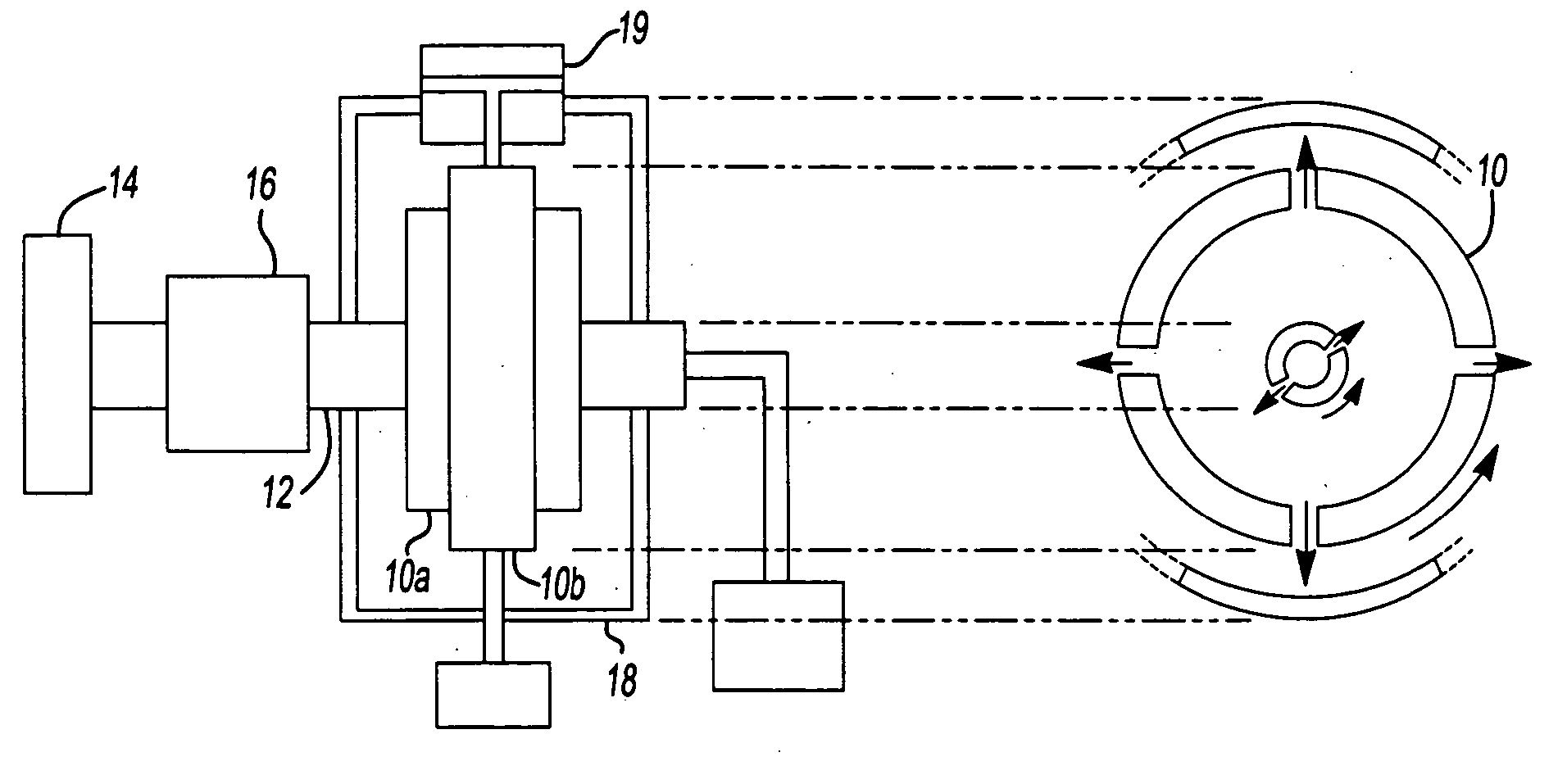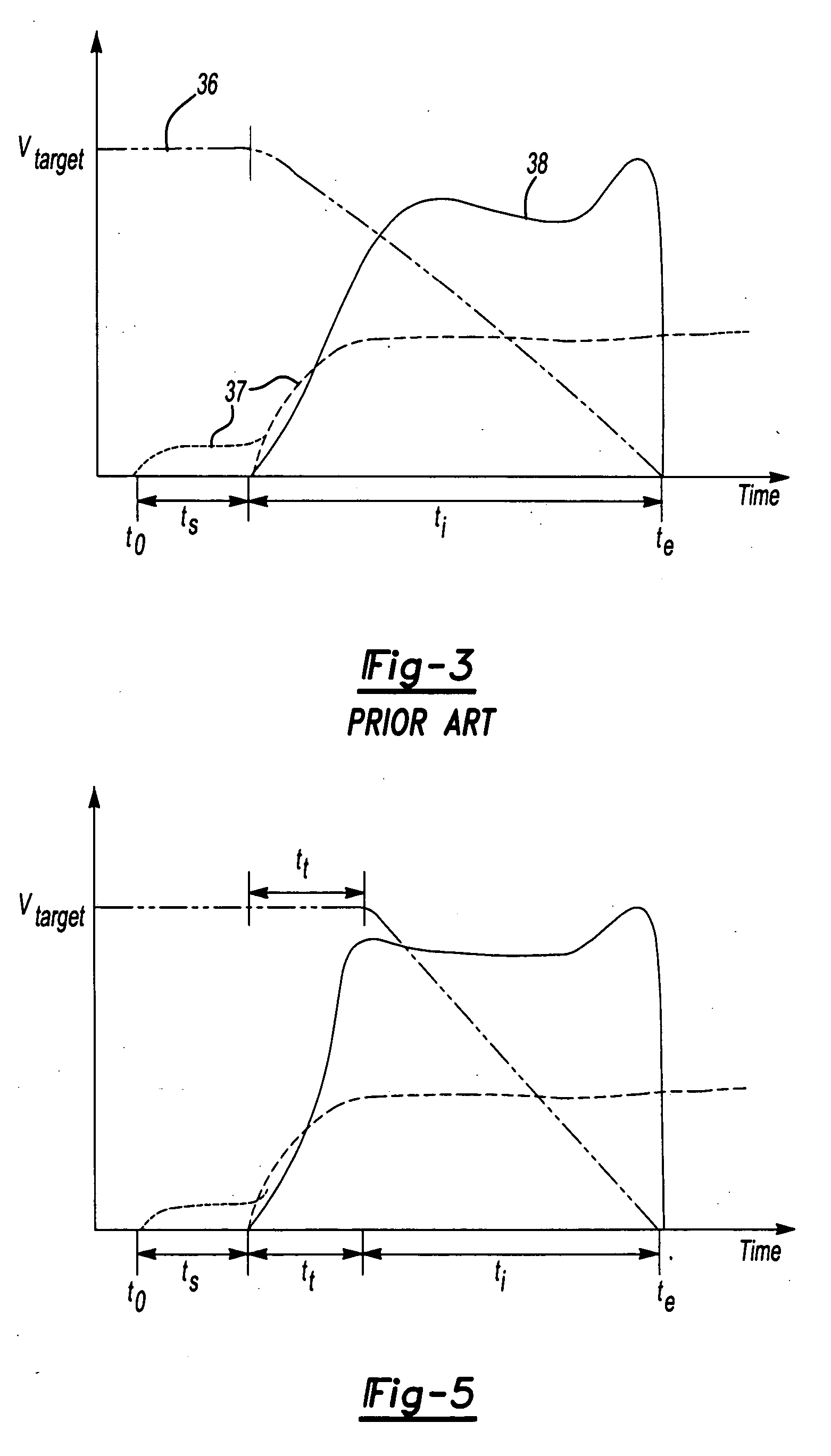Method of testing friction components for automatic transmissions
- Summary
- Abstract
- Description
- Claims
- Application Information
AI Technical Summary
Benefits of technology
Problems solved by technology
Method used
Image
Examples
Embodiment Construction
)
[0028] Referring now to FIG. 4, a flow diagram illustrates implementation of an improved control procedure for an SAE#2 friction component test stand according to one embodiment of the present invention. At a block 40, the test control system initializes control variables V(t) and F(t) at t=0, such that V(0)=0, and F(0)=0. Drive shaft speed V(t) and engagement force F(t) are measured at a block 42. Other variables also measured during the test include friction component engagement torque T(t). To prepare for friction component engagement, the drive motor 16 raises the drive shaft 12 speed to a prescribed value Vtarget at a block 44 and a decision block 46. Once V(t) reaches its target value of Vtarget as shown in the decision block 46, the test control system begins controlling engagement force F(t) as shown in an action block 48. Values of F(t) are equated to Ftarget(t) using either an open-loop control or a closed-loop control with measurements of F(t) as a feedback signal. The t...
PUM
 Login to View More
Login to View More Abstract
Description
Claims
Application Information
 Login to View More
Login to View More - R&D
- Intellectual Property
- Life Sciences
- Materials
- Tech Scout
- Unparalleled Data Quality
- Higher Quality Content
- 60% Fewer Hallucinations
Browse by: Latest US Patents, China's latest patents, Technical Efficacy Thesaurus, Application Domain, Technology Topic, Popular Technical Reports.
© 2025 PatSnap. All rights reserved.Legal|Privacy policy|Modern Slavery Act Transparency Statement|Sitemap|About US| Contact US: help@patsnap.com



